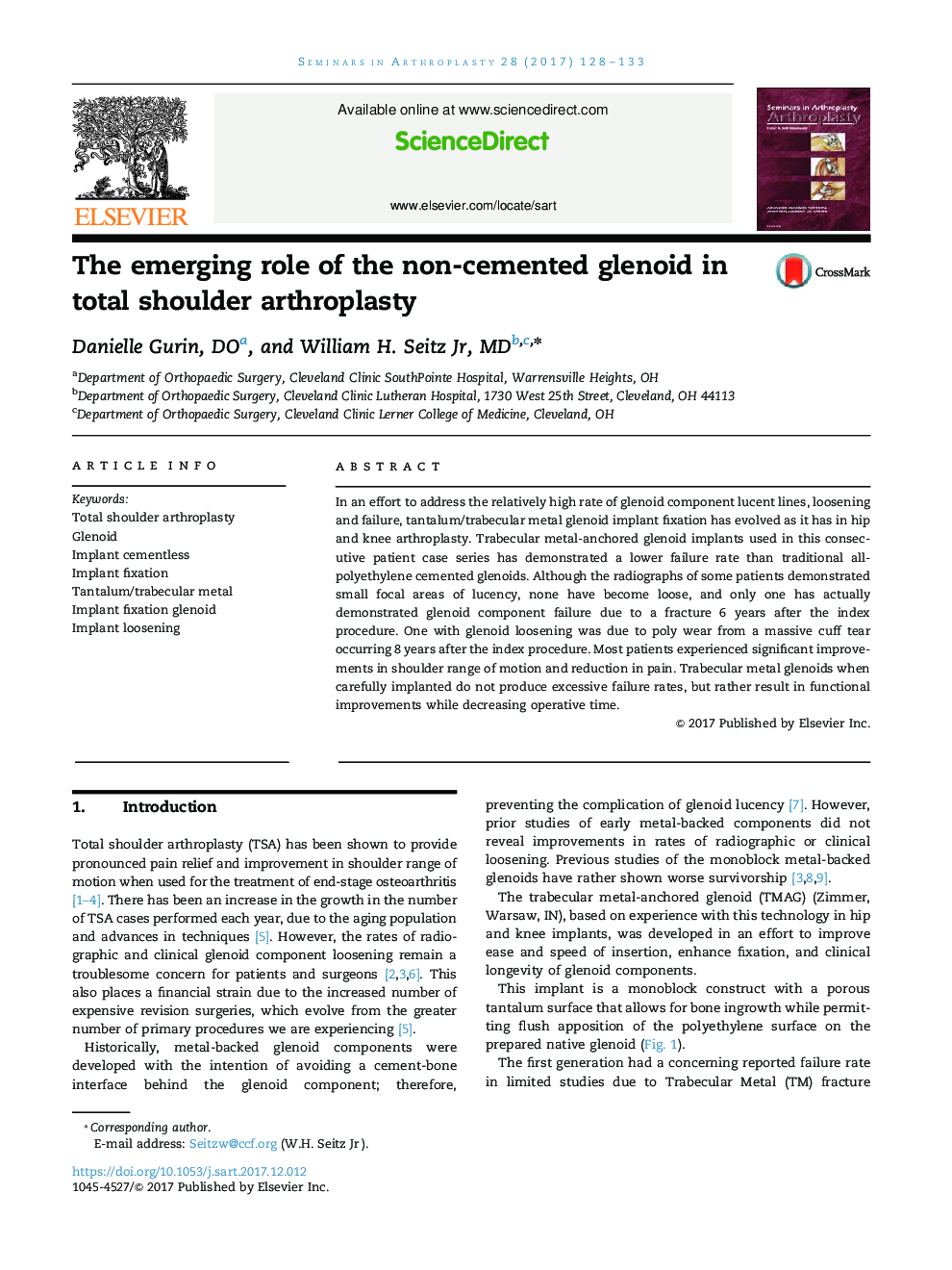| Article ID | Journal | Published Year | Pages | File Type |
|---|---|---|---|---|
| 8804079 | Seminars in Arthroplasty | 2017 | 6 Pages |
Abstract
In an effort to address the relatively high rate of glenoid component lucent lines, loosening and failure, tantalum/trabecular metal glenoid implant fixation has evolved as it has in hip and knee arthroplasty. Trabecular metal-anchored glenoid implants used in this consecutive patient case series has demonstrated a lower failure rate than traditional all-polyethylene cemented glenoids. Although the radiographs of some patients demonstrated small focal areas of lucency, none have become loose, and only one has actually demonstrated glenoid component failure due to a fracture 6 years after the index procedure. One with glenoid loosening was due to poly wear from a massive cuff tear occurring 8 years after the index procedure. Most patients experienced significant improvements in shoulder range of motion and reduction in pain. Trabecular metal glenoids when carefully implanted do not produce excessive failure rates, but rather result in functional improvements while decreasing operative time.
Related Topics
Health Sciences
Medicine and Dentistry
Orthopedics, Sports Medicine and Rehabilitation
Authors
Danielle DO, William H. MD,
